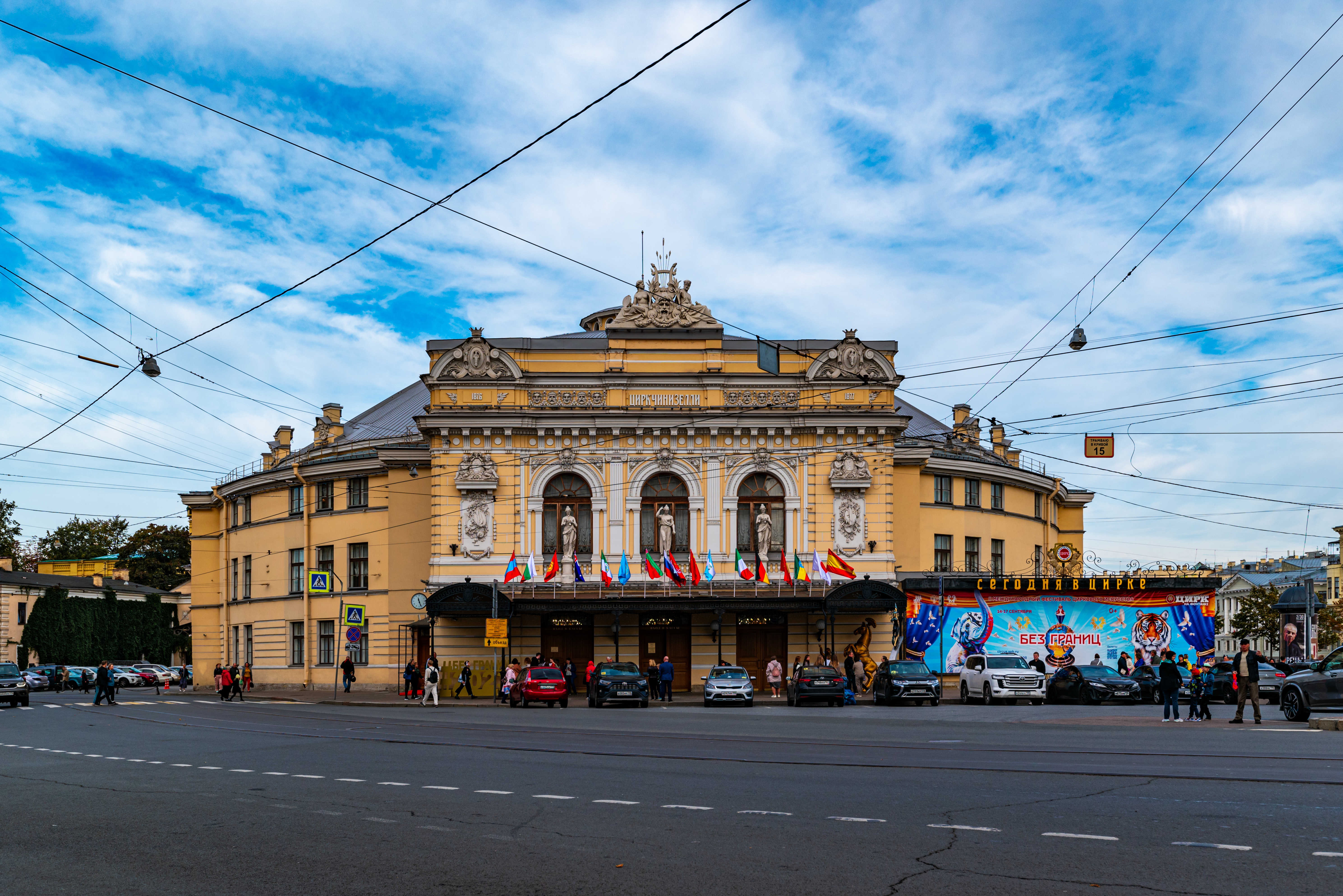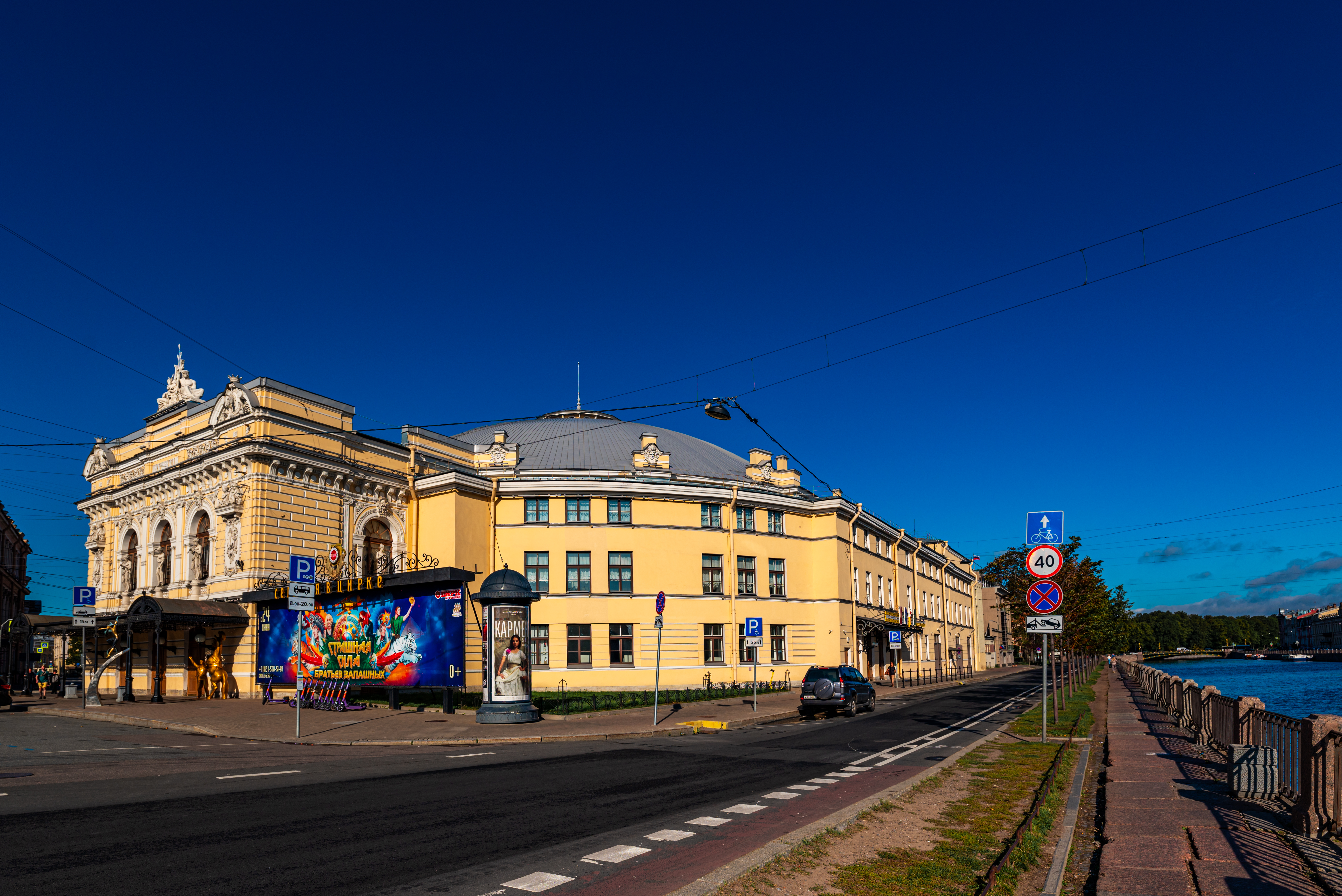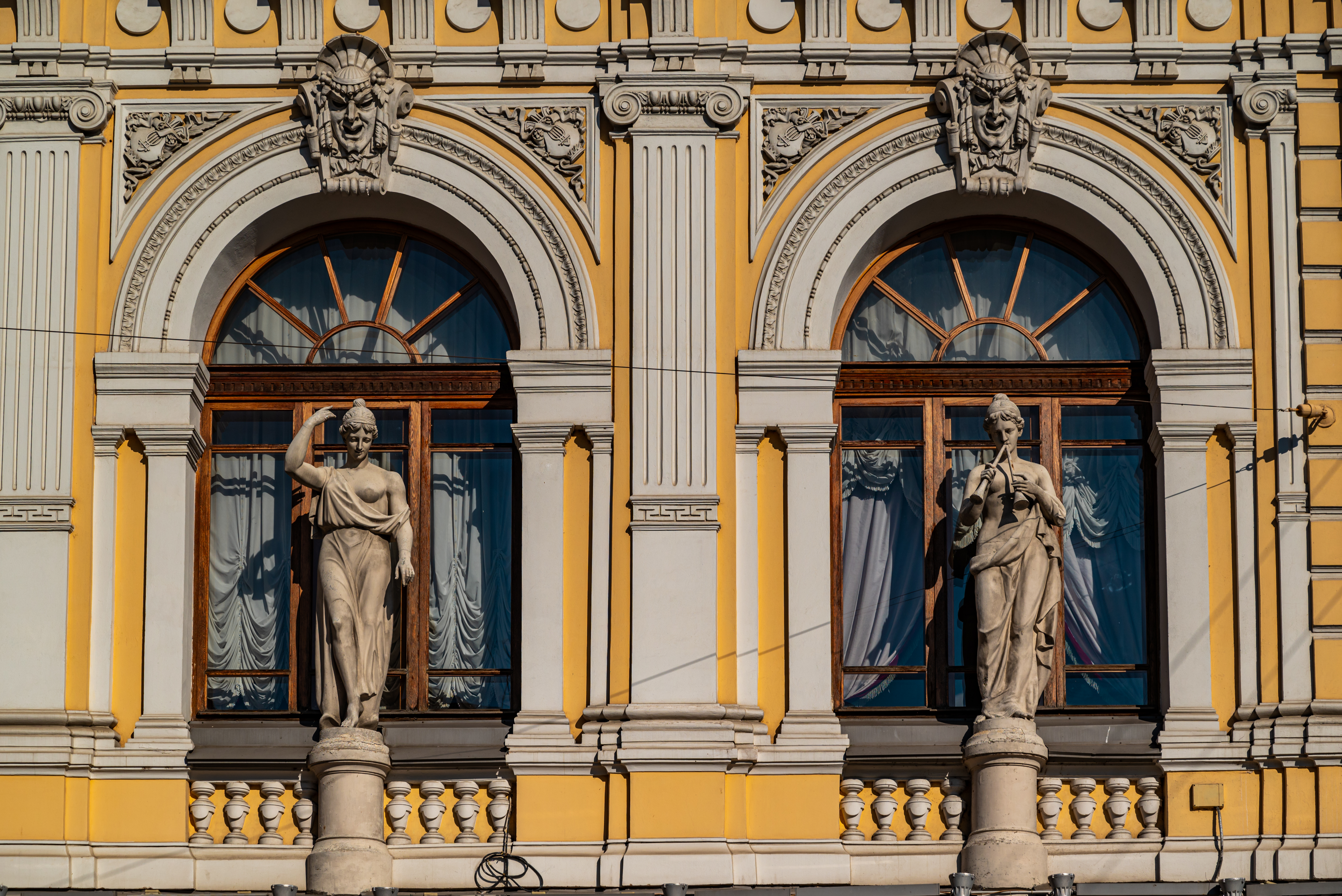 Back
Back
The Bolshoi State Saint Petersburg Circus

Fontanka Embankment, 3
The first stone stationary circus in Russia, one of the oldest Russian circuses.
Since 1827, in the Engineers’ Square (in front of the southern facade of the Mikhailovskiy Castle) near the Simeonovskiy Bridge, there was a Turner circus, adapted in 1828 for theatrical performances. The building had lasted until 1842, when it was broken down due to dilapidation.
In 1864, the Karl Hinne Circus arrived in Saint Petersburg and settled in a wooden building built earlier for Laura Bassen. Due to the disrepair, the building had to be demolished, and in 1867 Karl Hinne began construction of a new wooden circus. Hinne's troupe performed there until 1871, and in 1872 Gaetano Ciniselli took possession of this building for a symbolic sum. Then the plan to build a stone circus was born, because other European capitals had already had stationary circuses. In 1875, the Emperor leased the territory for 40 years for modest money, which Ciniselli could collect in one evening, with the condition that part of the city's Engineers’ square would also be improved for Ciniselli's expense. On December 26, 1877, the first stationary circus in Russia – the Bolshoi State Saint Petersburg Circus opened. The circus building was designed by architect V. A. Kenel.
The structure of a dome with a unique design seems to cover the hall. During the construction internal columns were dispensed with adding much space, and the span of the dome broke all records - 49.7 meters.
This design was so popular with the audience that it began to be used in the construction of many other stationary circuses. The interior is stuck to luxury and comfort, rich with velvet, gold and mirrors.
However soon after the construction had been completed, the building had to be restored – there was water dripping from the ceiling and it was very stuffy in the hall, which made the visitors unable to stay until the end of the performance. Tickets to the circus cost more than ones to the theater, but the director never made concessions and did not reduce prices. Nevertheless, the circus was a great success.
After the death of Gaetano Ciniselli in 1881, his wife Wilhelmina Hinne became the manager of the circus, and after her death in 1886, her son Scipione took over the duties of the director.
In 1919, the circus became state-owned and the last owners from the Ciniselli dynasty immigrated to Paris where they died in poverty.
In 1924, Williams Truzzi became the director of the circus.
In 2014-2015, a large-scale reconstruction of the circus had been carried out. The foundation and walls had been strengthened, the dome of the circus renewed. There are fewer rows in the auditorium now, but the location of the seats has become more convenient. The orchestra was also moved from the imperial box to its original place (above the forgang curtain).
In 2015, in honor of the bicentennial of Gaetano Ciniselli, the original name “Ciniselli Circus” was returned to the building. The doors of the Circus on the Fontanka River were opened for public on December 18, 2015.
The total number that, according to the architect’s plan, the circus can accommodate is 5,000 people, of which 1,500 are in the stalls. The building of the Bolshoi State Saint Petersburg Circus or the Ciniselli Circus is one of the sights of Saint Petersburg, and tickets for performances are sold out long before the premieres.





